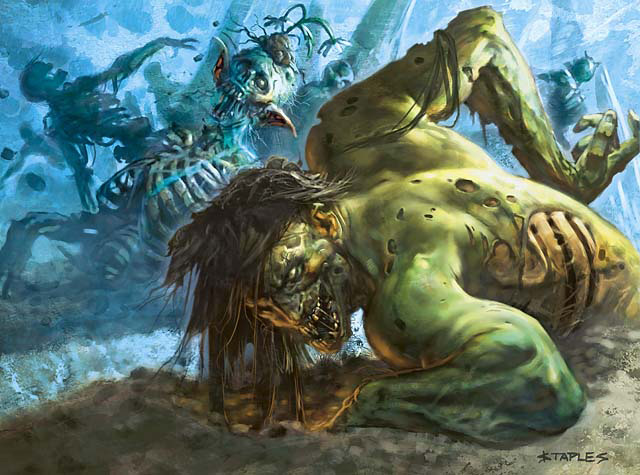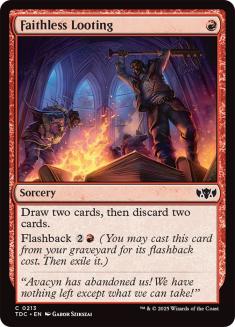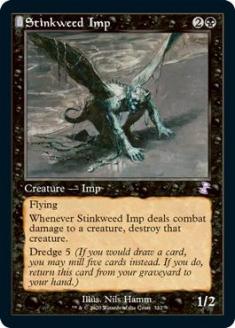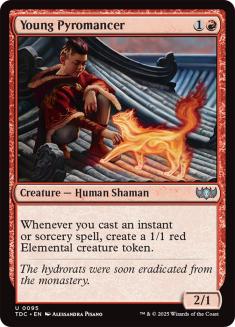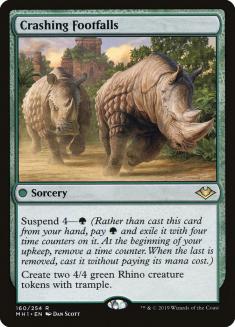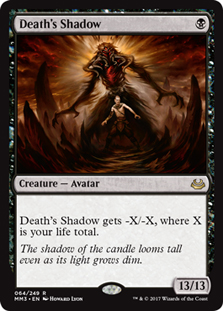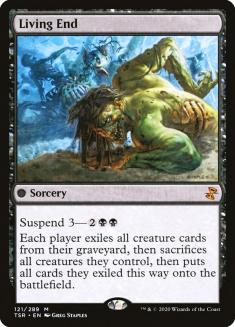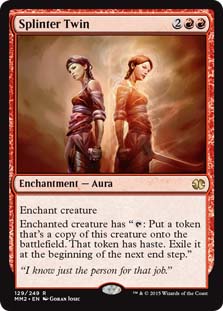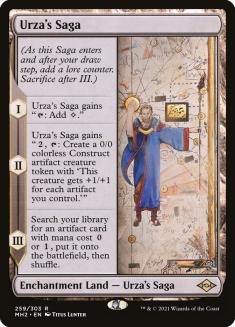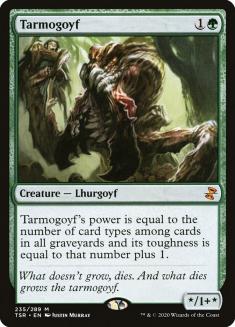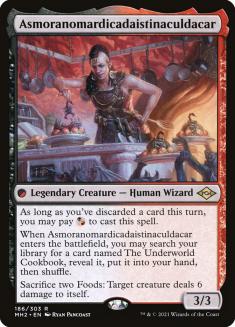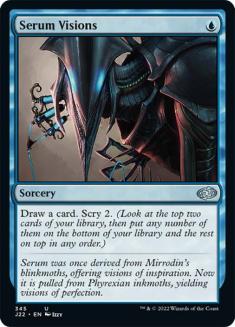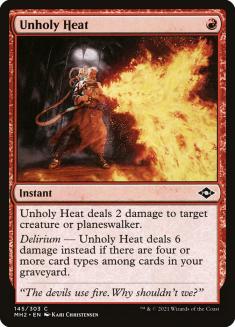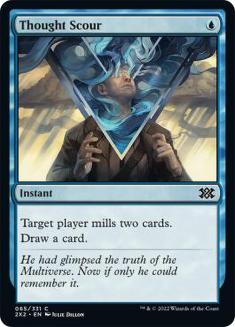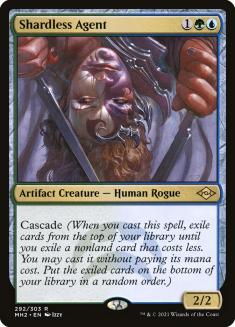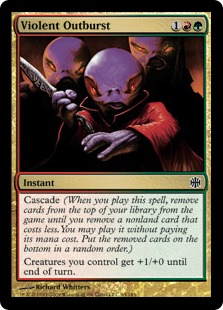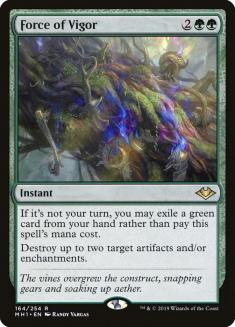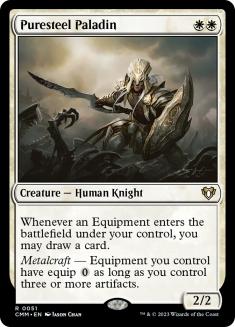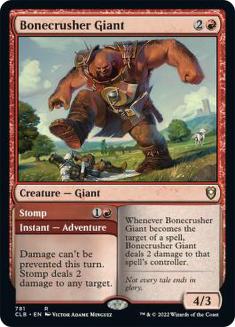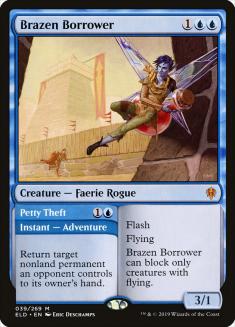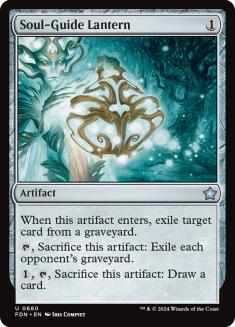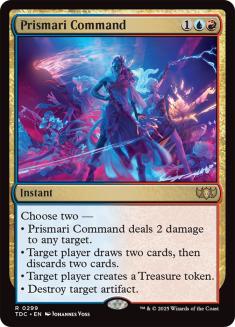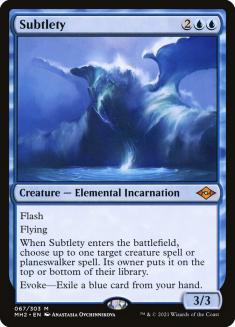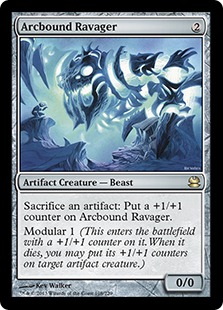My fellow writers have absolutely no respect for Living End.
Ross wrote an entire article bashing the deck as the subpar cousin of Temur Crashcade.
Gerry put it in the same tier as Gruul. When was the last time more than one Gruul deck did good in a weekend? Or even a calendar month?
Creatures (17)
Lands (23)
Spells (20)
Sideboard

Listen, I get the numbers point towards Temur Crashcasde. It has noticeably more Top 8 finishes over the last month.
Creatures (30)
- 4 Street Wraith
- 4 Architects of Will
- 4 Shardless Agent
- 4 Curator of Mysteries
- 4 Striped Riverwinder
- 2 Brazen Borrower
- 4 Waker of Waves
- 4 Grief
Lands (19)
Spells (11)
Sideboard

But Ross and Gerry did Living End dirty. Living End is regularly winning major events, putting up reliable results, and is clearly one of the premier decks of Modern right now. The deck is absurdly powerful, and dismissing it as a worse Temur Crashcade is the kind of disrespect that will lose you matches.
Ross laid out three points: Crashcade interacts earlier and more, it can play through hate, and is more flexible. He’s not wrong, he’s just not making relevant points.
Here are the actually relevant points that make Living End a Tier 1 strategy in Modern.
1. Why Would Living End Care About Having Piles of Interaction
Imagine you have traveled back in time a couple years. You ask a player what the best Faithless Looting deck is. Does the response “Dredge has less interaction than Mardu Pyromancer” actually provide useful information?
Temur Crashcade is a fair deck that happens to have a giant three-drop threat that it leans on to win most games. Think of it like Death’s Shadow, where you have the biggest finisher that just lands a bit delayed.
Living End is a combo deck where the combo is cast a Living End. Plus resolving Living End itself is also interaction.
Living End doesn’t have to worry a ton about the scope of what it’s doing, where Crashcade does. Playing the two decks against Urza’s Saga makes this immediately obvious. Crashcade needs interaction to beat a pair of 5/5s. Living End doesn’t. People seem to forget that for a couple weeks in the Asmor era of the format people just stopped playing Crashcade because of this.
The only Living End games where I’ve had to worry about scope involve cascading failures (pun intended). You miss on chaining cyclers and flood out, and they have specific cards like Solitude, and from there they have continuing plays. Just a lot of things going wrong in a row.
Living End has less interaction because it doesn’t need to rely on interaction to win most games, where Crashcade regularly has to get scrappy.
2. Ross Did Bad Math
I want to highlight a specific really wrong quote from Ross. And yes, he deserves how harsh this section title is because this quote is exceptionally wrong and bad.
Living End typically plays ten interactive cards, or 16.6% of the deck. Crashcade plays around 24 interactive cards, or 40% of the deck. Seems simple right?
How many cards in Living End don’t cycle? What does cycling do in terms of finding the non-cycling components of your deck?
By this same logic, Izzet Midrange isn’t a really interactive deck. It only has thirteen pieces of interaction. It’s a bit of a stretch to directly compare Striped Riverwinder to Serum Vision or Mishra’s Bauble in terms of how often it results in you finding the interaction you want, but clearly the raw quantity of cycling creatures has similar implications.
Now, even if you shortcut and call Living End ten interactive cards out of a 40-card pseudo-deck, that’s only 25% to Crashcade’s 40%. But that’s a much smaller difference than advertised, and when you start adding that Living End needs less interaction and is itself interaction, it all adds up and the “Living End is less interactive” narrative falls apart. You’re light on interaction for a midrange deck, but you’re loaded on interaction for a combo deck.
Possibly more importantly, Living End is functionally denser on cascade spells than the Crashcade decks. The eight cascade spells in Living End are close to a Crashcade deck playing a full twelve with Ardent Plea. You can suspend Crashing Footfalls, but in terms of doing powerful stuff, Living End is just rock solid reliable where Crashcade isn’t.
The one thing that can happen with cantrips is bottlenecking on mana, but that isn’t an issue for Living End because…
3. Free Stuff Is Stupid
So about this Grief card.
If the biggest miss of Ross’s analysis was starting under the assumption that Living End and Crashcade care about the same effect densities, the second biggest is just not mentioning Grief.
Grief in Living End is as absurd as you imagined it to be when the card was previewed, and these experiences are why I still believe the card is still in contention for the best of the mythic Elemental Incarnations. It’s the idealized version of interaction in a combo deck. It’s literally free, it hits the full spread of stuff you care about from Counterspell to Endurance to Void Mirror, it hits their main plan if you aren’t aiming at hate, and it also sets up your combo. It’s so much better than every interactive spell Temur Crashcade is playing, except maybe Force of Negation which you also play. Or Force of Vigor, which, again, you play. Or Endurance, and by now you get the joke here. The quality of the interaction that Living End gets to play is absurd, and the quality of interaction Crashcade ends up filling up with is not.
Don’t get me wrong, Fury is a good card and also free. But it’s so much worse in Temur Crashcade than it is in the other decks. The big draws to Fury in Modern are the nonsense synergies it has in a deck like Four-Color Elementals (Kaheera), which don’t exist in Crashcade, and using Fury to leverage mana use while producing threats for tempo. Cascade decks naturally don’t do that producing threats thing until Turn 3, and once you’re using Fury to clear the way when you’re making Rhinos, it sure sounds like you’re looking for the card Living End instead.
This is probably also a good time to discuss Force of Vigor. Ross mentions Mono-White Hammer (Lurrus) as a primary reason to want Turn 1 and Turn 2 interaction, but my experience is that the cheap interaction is all trash that buys fractional turns and eventually loses the fight to Urza’s Saga. Force of Vigor is the card that can actually solo a Hammer player. Crashcade is a better Force of Vigor deck than Living End since it has more green stuff to pitch, but that’s all in the margins. Even if Living End just dies on the draw sometimes, it also just casts Living End and wins the game through whatever in ways Crashcade can’t.
Or you just cast Grief and good things happen.
4. Who Cares About Hate?
Ross’s last big points are this fear of hate and playing games against it. I present one solid counter argument: what makes you care about that?
Ross talks about Crashcade being able to play Magic through a Chalice of the Void or other hate card, but it sure doesn’t play good Magic. Maybe I won’t lose to some pile if I can’t kill Chalice, but I expect to lose to the functional decks the vast majority of those games this happens.
You might have a fear of graveyard hate, but there’s no real reason for people to show up loaded on graveyard hate in Modern. Maybe that changes if more Dredge shows up, but the reason to have graveyard hate right now is mostly Living End, partly getting some equity against a Lurrus of the Dream-Den. And if you want to play hate against exactly Living End, you have more sideboard equity in the general anti-cascade cards that overlap with Crashcade. You will face a bit of graveyard hate across the field and your Living End deck might have to battle through one or two more cards a match, but not enough to make a large difference.
Weirdly, Temur Crashcade also pushes things towards the hate not being sufficient. I mentioned that I assumed any game where my opponent stuck an unanswered hate card didn’t look good for Crashcade against the normal decks, but that weirdly changes if they draw two or three of the same hate cards. Crashcade exploits opponents who overload on hate for it, where Living End exploits opponents who draw one piece of hate and get it broadly stopped by Force of Negation, Grief, or the other anti-hate cards in Living End. In a weird way, despite the fact that all the cascade hate cards are the same, the fact you need to balance them out differently against each deck makes the situation not clearly bad for either deck.
We can also talk about the other mythic Elemental Incarnation: Endurance. Yes, Endurance is a prominent Modern card that’s good against Living End. But Living End is naturally good against Endurance. In the head to head against Grief, Endurance tends to lose. There’s windows where Endurance can sneak in and mess stuff up, but just as often you get to lead on Grief then Violent Outburst in response to their Endurance and it all falls apart. And then there’s the sideboard Subtlety, which overloads Endurance in a similar way to Grief where it’s just a fine card with combo synergies.
When To Not Play Living End
Hopefully I’ve illustrated why Living End is both great and why declaring it overshadowed by Temur Crashcade is flat out wrong, but I’ve also illustrated that the heads up comparison is an easy way to end up in that same spot of being flat out wrong. When should you be avoiding Living End or even switching to Temur Crashcade?
I answered a lot of this three weeks ago, and that all still holds.
The big issue for Living End is Dredge. If Dredge becomes a big part of the metagame for a weekend, the next week is not when you want to play Living End. People trying to beat Dredge breaks the entire premise that Living End is facing the same hate as Temur Crashcade would, and the scenarios you end up facing down two or three hate cards a game start becoming a reality instead of a rarity.
The other big issue is just weird stuff happening to you due to the symmetry of Living End. It’s less of a concern than it used to be since the Living End cyclers are outpacing the sacrifice stuff on per card quality a lot harder these days, but watch out for Viscera Seer, Arcbound Ravager, Stitcher’s Supplier, and who knows what else. Your own Endurance helps a bit here, but is a significant extra hoop you need to jump through.
You would think Teferi, Time Raveler makes you want to play the Crashcade deck with Fury, Bonecrusher Giant, and Fire to try and clear the planeswalker, but my experience has been that Teferi is a three-drop sorcery against your free answers out of Living End. The Wafo-Tapa style Azorius decks with Teferi and a ton of hate are an issue, but again this is a situation where you have to wonder if either cascade deck is what you want to play into that metagame.
The big reason to switch to Crashcade over Living End is if some Rhinos is sufficient to solo a game against the format. So much of my discussion here has been based on the scope of what a resolved Living End has to offer, and when you start playing matches and comparing the two decks head-to-head the raw ease of the Living End wins is the most striking part of the deck. If Crashcade offered that, then I would say it was clearly the better cascade deck.
But it doesn’t offer that, and the fact that difference is so immediately obvious certainly implies this is far from becoming reality in the Modern format. For the forseeable future, I expect Living End to have a spot at or near the top of the Modern metagame. At best, the debate over the better cascade deck remains unresolved.
But really, we all kinda know Living End is the fundamentally better deck, and scrappy little Crashcade is trying it’s hardest week by week to match what Living End has to offer.

